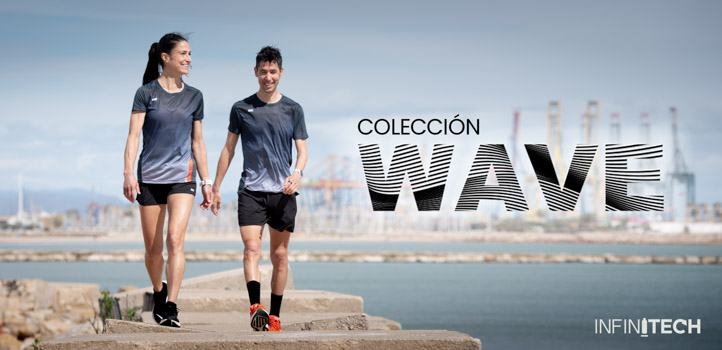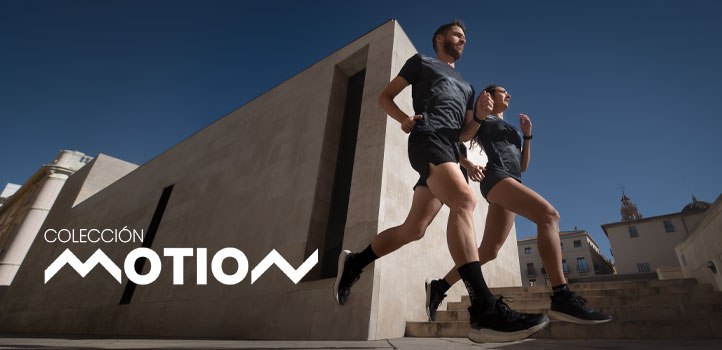Subscribe to our newsletter to find out about all the news and promotions, and automatically receive a welcome discount coupon in your email.
What happens when you go over kilometers in preparation for an important race? Well, you have a good chance of suffering iliotibial band injury or, as it is more commonly known, Runner's knee o runner's belt.
'Runner's knee' or iliotibial band syndrome
I remember that in 2015 I received a phone call on a Wednesday, four days before the Valencia marathon. From the other side of the phone line they told me: “Hello David, I am a friend of Jacob and he told me that you can take away my 'runner's knee' problem for this Sunday when I run the Valencia marathon and I want to make a personal record.”. My answer was the following: “Making a personal best will depend a lot on whether or not you can run on Sunday”.
I immediately called him in for a consultation and found that he had accumulated excessive training, very demanding in terms of mileage; Furthermore, I discovered that he had an excessively valgus knee, with an excessively valgus ankle and a timing incorrect muscle that activated the tensor fasciae latae and contractured it to the point of not being able to run.
I told him that I was going to patch his 'runner's knee' problem to try to enable him to compete on Sunday, although I warned him that I couldn't guarantee that he would be able to finish the race. I decided to do the following treatment:
- Dry needling and electropuncture of the tensor fascia latae.
- A functional knee bandage that will align your knee upon impact.
- An ankle bandage that would prevent excessive valgus generated by the activation of the tensor fascia lata.

I asked him to try running 10 kilometers the next day, Thursday (3 days before the competition) and I told him that if everything went well after that training, he could hope to start the marathon and contemplate the possibility of completing the 42,195 kilometers despite his 'runner's knee' problem.
The next day he went out to train and ended up doing 18 kilometers (and not 10, as I had told him) “because I felt good”. “Will I be able to finish the marathon with this?”, he asked me after confessing that he had done 18 kilometers; my answer was "let's try", without more.
Obviously, he did not know (and I did not tell him) that with each impact the bandages on his knee and ankle would lose effectiveness and that little by little he would have pain again; My hope was that he would be able to get to kilometer 25 without any problem and that from there he would be able to endure the increasing pain that he was going to suffer.
This real situation that I have told (and that has happened to me on more occasions throughout my professional career) is something that sports physios sometimes have to face. And in a situation like this you have to make the decision to do palliative physiotherapy, that is, you have to do whatever it takes so that the athlete can compete, leaving aside the therapeutic physiotherapy that would provide a solution to his problem.
But what is the 'runner's knee' or runner's band?
El runner's knee syndrome o iliotibial band syndrome is a frequent injury in runners with too intense preparations and with accumulation of too many kilometers in their legs.

It is an injury that begins with pain on the outside of the knee and it increases progressively, becoming very intense when long runs or training with too many impacts are performed. It's a pain that starts soft and that is increasing until you reach a painful burning sensation that ends up forcing you to stop because the sensation of pain becomes unbearable.
The muscle affected and behind the problem known as 'runner's knee' is the tensor muscle fascia lata; is about a hip muscle with a long tendon that inserts into the knee on its external surface. When the pain begins, it is normal to confuse it with a knee problem, but the problem is really in the hip tensor muscle.
A runner who has a lack of adductor muscles and limitations in the abductor muscles will generate an overload that will cause pain in the knee. This means that if you have more strength in the external part than in the internal part (adduction is what closes the leg and abduction is what opens it), having more strength in the abductor part (the one that opens) will to generate pain in the knee, but really the problem is in the hip.
What should be taken into account when evaluating runner's knee syndrome?
- Weakness in the hip abductor muscles due to overload.
- Runner with poor alignment of the entry of the foot on the ground generating a valgus or varus of the knee, this will cause overstretching or weakness in the tensor fascia latae.
- A runner's short leg will generate a weight shift that will produce more load on one knee; In order not to touch the ground, the athlete has a tendency to run by abducting.
- Excess valgus in the ankles due to loss of strength in the tibialis posterior will force the runner to elevate the foot, generating a poor flight in the stride, forcing the tensor fascia lata to elevate the leg.
- Multidisciplinary work between physiotherapist, physical trainer and podiatrist to generate good biomechanics in the patient.

What should you do if you suffer from 'runner's knee'?
- First of all, we must keep in mind that we do work the muscles without control foot posture (foot captor) we will not be able to treat the injury.
- Secondly, we must remember that 'runner's knee' is actually a hip problem so we must improve hip mobility and strength.
- Thirdly, we must control all the strength work of the intrinsic muscles of the foot to improve the adaptation of the knee to the ground.
- Fourthly, we will be forced to do training with fewer kilometers.
- It is advisable to help during rest periods with water training and cycling sessions
- Go to the physiotherapist once a week to improve muscle timming and remove muscle tone.
Going back to the patient from the beginning, he was able to finish the race and even lowered his time from the previous year. When he returned to the clinic on Monday after the marathon, I noticed that his instep was burned and then I asked him what had happened to him and how had he been able to lower his mark?
He told me that at kilometer 15 he had an accident at a refreshment station: «As I approached the aid station I inadvertently stepped on a banana peel, slipped and slipped under the aid station table, knocking all the glasses of water over me. The entire ankle bandage became soaked with water and began to rub after a few kilometers, causing me such pain that I completely forgot about the pain in my knee. In the end, I pushed and ended up sprinting.", he explained smiling to me with his 2nd degree burn on his instep.
Moral: never stop chasing your dreams. In the competition any detail is valid to achieve the objectives. Sport is not healthy, competition is not healthy, but the sports physiotherapist is there to understand you, support you and with a little luck “heal” you.
Today, this patient continues to run marathons with insoles, with less training load and less accumulation of kilometers, with optimal hip activation, with his knee and foot perfectly aligned to be able to enjoy the sport he loves.
Congratulations to all the runners who, against all odds, have the courage to stand at the starting line to try to achieve their sporting challenges; The sports physios will always accompany you.
More articles by David Valenzuela, sports physiotherapist at Box55
Sports physiotherapist David Valenzuela is one of the regular contributors to the blog. 42K. Many long-distance and trail runners pass through his office. running, track, etc., so you know perfectly well what are the main injuries that exist in the world of running, as is the case with the tibial periostitis, Plantar fasciitis, patellar tendinopathy and achilleus tendinopathy, low back pain, hamstring tear or ankle sprain.


Text to 42K of :
David Valenzuela Diaz
Physiotherapist at BOX55
David Valenzuela Díaz has a degree in physiotherapy from the Cardenal Herrera CEU University and a Master's degree in assessment, physiotherapy and sports rehabilitation from the University of Valencia. He is CEO of BOX55 Fisioterapia y Academia SL, of BOX55 Academy and of Valobando SL Functional Biomechanical Analysis.
David Valenzuela, CEO of BOX55
Other entries by David Valenzuela Díaz
42K · All rights reserved


Comments
Post a first comment for this entry!